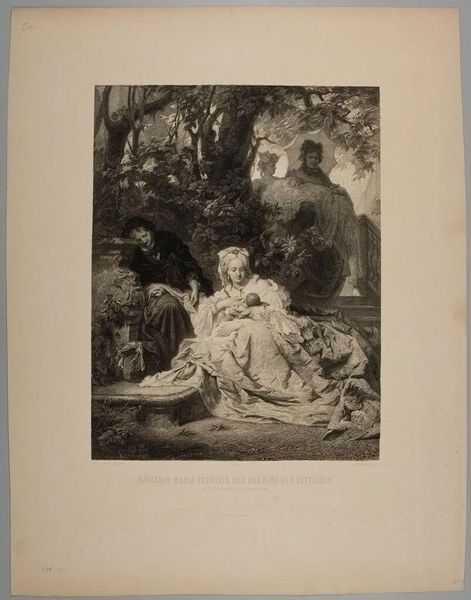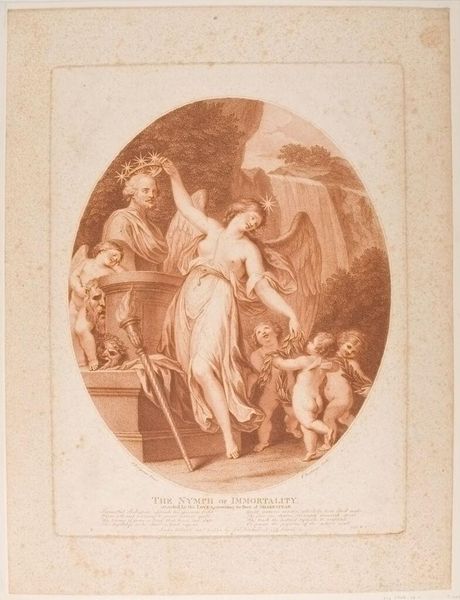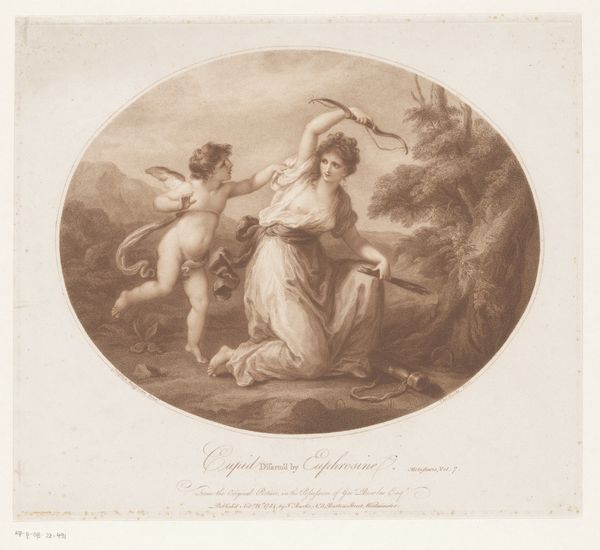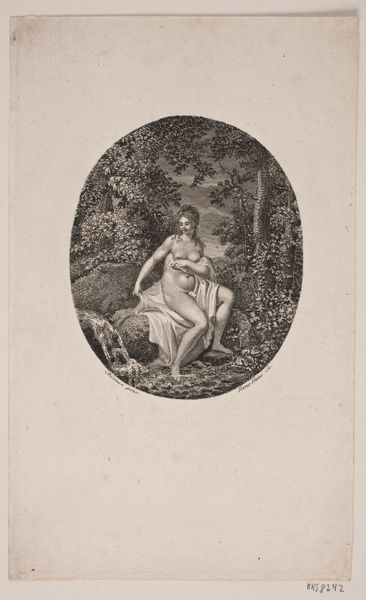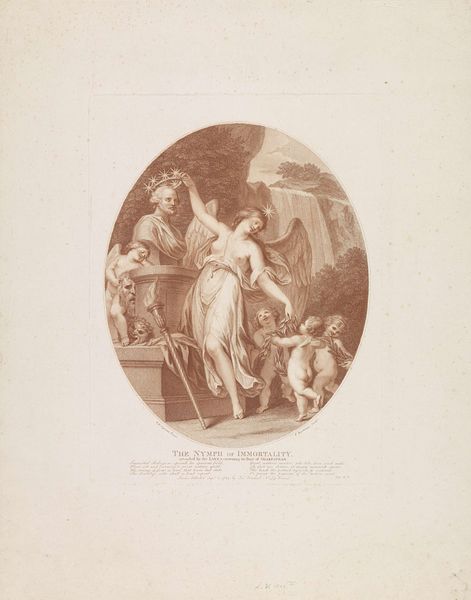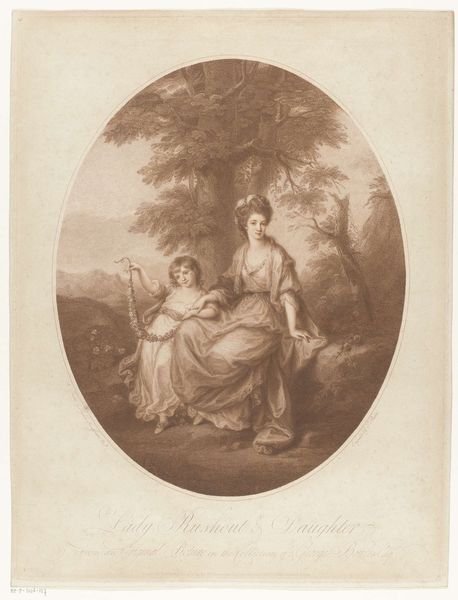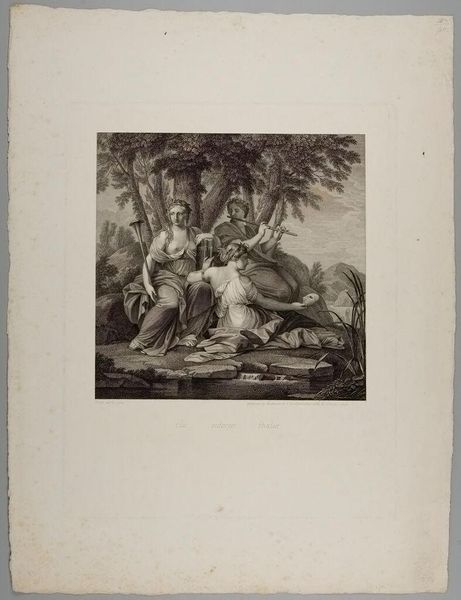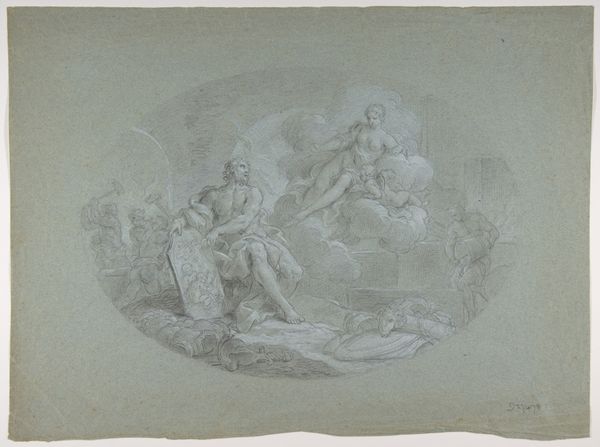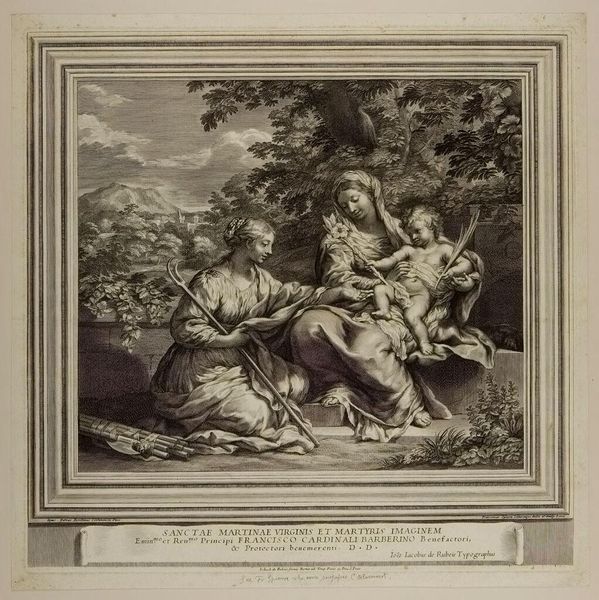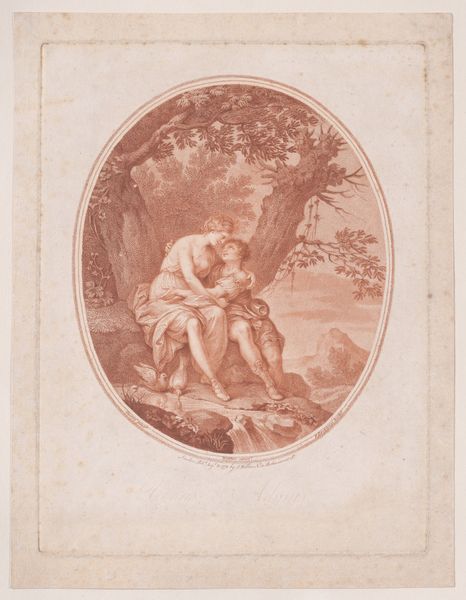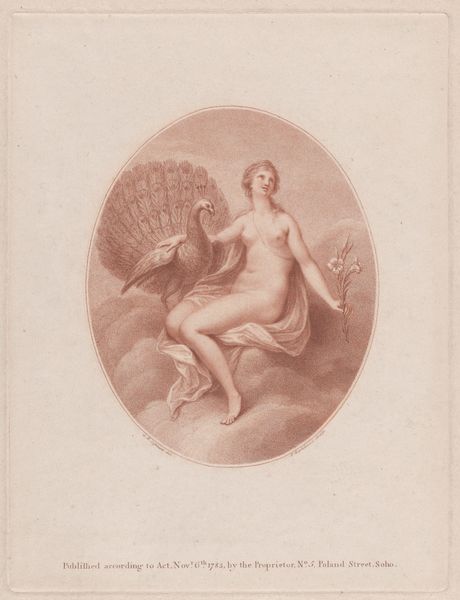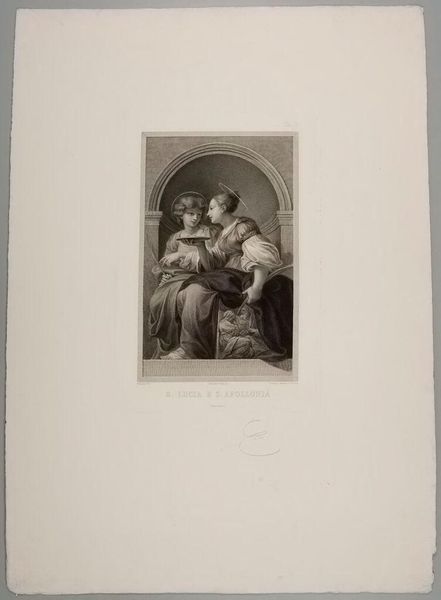
'When Paris Lives Not to Oenone True, Back Xanihus Streams Shall to Their Fountains Flow' 1780
0:00
0:00
print, engraving
#
neoclacissism
# print
#
figuration
#
history-painting
#
engraving
Dimensions: 254 mm (height) x 190 mm (width) (netto)
Editor: Here we have "When Paris Lives Not to Oenone True, Back Xanihus Streams Shall to Their Fountains Flow," an engraving by Francesco Bartolozzi from 1780. There's a definite melancholy feeling here, figures entwined in a pose of farewell or perhaps rejection. What layers do you see in this piece? Curator: This engraving offers us a window into the Neoclassical era's fascination with antiquity, but through a distinctly 18th-century lens. What's interesting to me is the embedded power dynamic within this mythological scene. Paris's rejection of Oenone speaks not just to a personal betrayal but to larger narratives of male power and female disposability, issues which feminist art historians have scrutinized extensively. How does the visual composition reinforce or perhaps subvert these narratives, in your opinion? Editor: It's true that Oenone seems more vulnerable, she is kneeling, but is Paris truly powerful, or simply trapped? Perhaps he’s less an agent of patriarchy and more a victim of fate? He looks trapped, gazing upward as if something greater commands him. Curator: That’s a compelling observation! It urges us to consider the period's broader philosophical shifts. Was he truly in control, or merely performing a role dictated by societal expectations? The work might subtly critique the very notion of masculine agency within prescribed social structures. Think of the constraints placed upon men as the head of their household and legacy: did he have a choice, or was he a performer of that era’s vision of masculinity? Editor: So, looking at the work this way, we're not just seeing a mythological scene, but also a commentary on the social constraints of the time. I had not considered that this work may contain an element of social critique. Curator: Precisely. Art offers endless opportunities for dialogue between past and present, revealing enduring power dynamics and possibilities for resistance and reinterpretation. This lens challenges us to move beyond simple aesthetics.
Comments
No comments
Be the first to comment and join the conversation on the ultimate creative platform.

